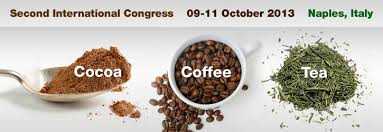by Donadini G.1, Fumi M.D.1 1 Institute of Oenology and Food Engineering, Università Cattolica del Sacro Cuore, Piacenza, Italy
Food and drink pairing is gaining momentum. A great deal of information is found about food and drink pairing in the popular press in which suggestions are mostly based on personal opinions of sommeliers, culinary and gastronomy experts, and enthusiast writers.
Apart from the mainstream press, scientific studies that examine ideal chocolate and beverage relationships under controlled conditions are scarce. Only one study in literature dealt with chocolate and beverage pairing to the authors’ knowledge.
The majority of studies on the hedonic response of consumers to food and beverage pairings arise from research on food and wine combinations, which provide consistent evidence of both the suitability of cheese as an enjoyable partner of wine and conflicting results on the versatility of specific wine styles in partnering with different cheeses.
Few studies have focused on beer and cheese, beer and food, extra-virgin olive oil and food pairings and meat and vegetable accompaniments.
Therefore, understanding patterns that underlie consumer preference for chocolate and beverage pairings is required to improve the ability of making the appropriate match.
The current study was designed to explore the hedonic response of a panel of consumers (n = 80) to chocolate and beverage pairings by conducting tasting sessions in a natural environment of consumption.
To reach this aim, regular chocolate and coffee/tea consumers were asked to hedonically rate pairings between chocolate samples with different cocoa solid contents and coffee/tea samples and to indicate whether the chocolate or the tea/coffee flavour dominated each pair.
To understand the relationships between the sensory data and consumer liking, expert panellists were asked to explore the sensory properties of the coffees and the teas by Descriptive Analysis (DA) with and without prior chocolate consumption.
The DA data and consumer liking were successively examined by means of PLS-Regression.
Factorial ANOVA measured the effect of chocolate liking, coffee/tea liking, chocolate type, coffee/tea type and flavour dominance and the interaction between chocolate type * coffee/tea type on pairing liking.
The omega squared statistic reported the effect size of significant variables in the model on consumer pair liking.
Results are reported on consumer preference for chocolate and tea/coffee pairings. Factors affecting the hedonic response of the consumers are also presented and discussed in light of the modification induced by chocolate on tea/coffee flavours.
The results of this study offer knowledge of chocolate and tea/coffee pairing patterns to engineer the most enjoyable pairings and avoid intolerable mismatches.


















